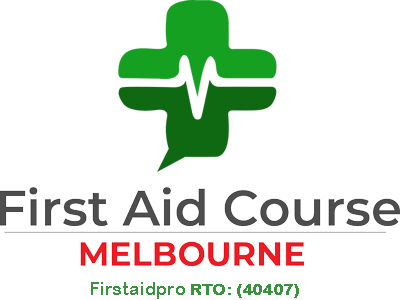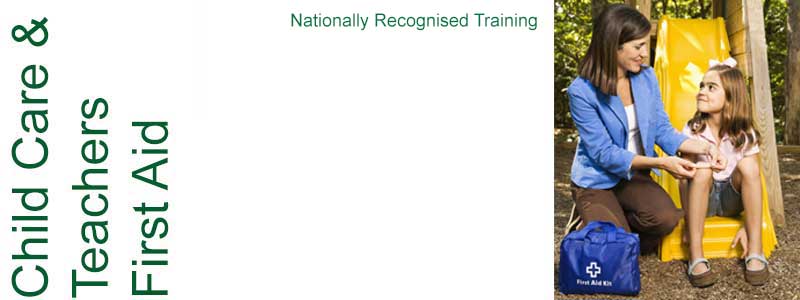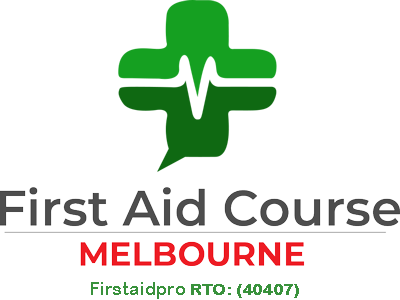Course Name
HLTAID004 Provide an emergency first aid response in an education and care setting
This course has been superseded by HLTAID012 – Provide First Aid in an education and care setting
Course Code Included
HLTAID004 – Provide an emergency first aid response in an education and care setting
Course Cost
$129 (may vary)
Course Duration
6.5 Hours Face-to-Face Training & Assessment + Pre Learning and Quiz
(Time varies on individual skills, knowledge and experience)
Is the course accredited?
Yes
Does the course meet workplace requirements?
Yes
Available Discounts
Group Booking Discounts Available
Previously Known as
HLTAID004
HLTAID004 Provide an emergency first aid response in an education and care setting
This course covers the skills and knowledge required to provide a first aid response to infants, children, and adults.
The unit applies to educator and support staff working within an education and care setting who are required to respond to a first aid emergency, including asthmatic and anaphylactic emergencies.
This unit of competency may contribute towards approved first aid asthma and anaphylaxis training under the Education and Care Services National Law and the Education and Care Services National Regulations (2011)
This unit of competency has been approved by ACECQA and meets the requirements of
“First aid asthma & anaphylaxis“
This course is suitable for anyone working in long day care, family day care, pre school and outside of school hours (OOSH) care services and PCYC
Gain your certifications including: CPR, Child Care First Aid and basic emergency life support (BELS)
Nationally Accredited Units Includes:
- HLTAID004 Provide an emergency first aid response in an education and care setting
- HLTAID003 Provide first aid
- HLTAID002 Provide basic emergency life support
- HLTAID001 Provide cardiopulmonary resuscitation
Covid-19 Precautions
At The First Aid Course Melbourne, your health and safety is our priority. Infection control measures and COVID-19 practices are applied across all our training facilities. Please remember if you are unwell or experiencing any symptoms, we ask that you contact us to reschedule your training. For further information please email courses@firstaidpro.com.au.
How is the Course Delivered?
No Online Workbook or E-Learning Required
Training and Assessment is delivered Face to Face (6.5 hours)
Plus + Prior to attending the face-to-face training session, you are required to complete the pre-course reading (PDF), and complete the quiz and bring it to the training session on the day. This is a self-paced, self-directed, and mandatory component of the course. The actual number of study hours required for each learner varies depending on the learners existing knowledge, skills and experience.
How is the Course Structured?
All participants will be assessed through a combination of the following assessment methods:
- Practical Demonstrations: Simulated scenarios/Role playing
- Project (Incident Reports)
- Knowledge Assessment
Course Requirements
- Participants must be 14 years of age (those who are under 18 must present enrolment form from a parent or guardian to accept responsibility)
- Prepare verbal incident reports or provide information to enable preparation of an incident report (e.g. first aid report)
- Communicate effectively and assertively in an incident (e.g. give a casualty handover)
- Use literacy and numeracy skills as require reading, interpret and apply guideline and protocols (e.g. read and follow ARC guidelines)
- Perform at least 2 minutes of uninterrupted single rescuer CPR (5 cycles of both compression and breaths) on an adult manikin placed on the floor
- Perform at least 2 minutes of interrupted single rescuer CPR (5 cycles of both compression) on an child and infant manikin placed on the firm surface
Course Fees
$139 (Varies from State to State)
Includes:
- HLTAID004 Provide an emergency first aid response in an education and care setting
- HLTAID003 Provide first aid
- HLTAID002 Provide basic emergency life support
- HLTAID001 Provide cardiopulmonary resuscitation
Course Times
Our First Aid CPR Courses run frequently in many locations, 7 days a week from 9:00am to 4:00pm (Varies from state to state).
First Aid & Certificate Issued Same Day
Fully Accredited | Same Day Certificates (see terms and conditions)
On the Day, after Successful Completion of the Training Course:
- All Child Care First Aid Certificates (Statement of Attainment) are issued electronically in HLTAID004 Provide an emergency first aid response in an education and care setting, (including HLTAID003 Provide first aid, HLTAID002 Provide basic emergency life support and HLTAID001 Provide cardiopulmonary resuscitation). (T&C)
- Additionally, hard copies HLTAID004 Provide an emergency first aid response in an education and care setting, can be purchased for a fee of $12 including postage.
- As recommended by the Australian Resuscitation. The HLTAID001 Provide cardiopulmonary resuscitation component of the course is valid for 12 months and will need to be updated annually for you to keep your certification current.
Course Content
This unit of competency describes the skills and knowledge required to provide a first aid response to infant children and adult educations and support staff working within an education and care setting who are required to respond to a first aid emergency, including asthmatic and anaphylactic emergencies.
Topics include
- Provide first aid
- CPR & defibrillation
- First aid management of anaphylaxis
- First aid management of asthma
- Emergency management of asthma in the workplace
- Responding to an emergency situation
- Infant and child anatomy and physiology
- Consequences for provision of first aid
- First aid requirements for services under the Education and Care Service National Law
Knowledge Evidence
The learner will show the ability to complete tasks outlined in the criteria of this unit, manage tasks and manage contingencies in the context of the job role.
Practice and assessment will be completed in line with state/territory regulations, first aid codes of practice, Australian Resuscitation Council (ARC) guidelines and workplace procedures:
State/Territory regulations, first aid codes of practice and workplace procedures including:
- ARC Guidelines for provision of CPR and first aid to infants, children and adults
- guidelines from Australian national peak clinical bodies
- safe work practices to minimise risks and potential hazards
- first aid requirements for services under the Education and Care Services National Law
- infection control principles and procedures, including use of standard precautions
- requirements for currency of skill and knowledge
- legal, workplace and community considerations, including:
- awareness of potential need for stress-management techniques and available support following an emergency situation, including the psychological impact on children
- duty of care requirements
- respectful behaviour towards a casualty
- own skills and limitations
- consent, including situations in which parental/caregiver consent is required
- privacy and confidentiality requirements
- importance of debriefing
- considerations when providing first aid including:
- airway obstruction due to body position
- appropriate duration and cessation of CPR
- appropriate use of an AED, including placement of pads for adults and children aged older than 8 years
- specific considerations when using an AED on children aged between 1 and 8 years, including identification of AED with paediatric capability, paediatric voltage and use of paediatric pads
- chain of survival
- standard precautions
- how to conduct a visual and verbal assessment of the casualty
- principles and procedures for application of first aid management of the following scenarios:
- abdominal injuries
- allergic reaction
- anaphylaxis, including signs, symptoms and triggers and using different types of adrenaline auto injectors
- asthma, including signs, symptoms and triggers and using different types of bronchodilators
- basic care of a wound
- bleeding control
- burns
- cardiac conditions, including chest pain
- choking and airway obstruction
- crush injuries
- diabetes
- dislocations
- drowning
- envenomation
- environmental impact, including hypothermia, hyperthermia, dehydration and heat stroke
- eye and ear injuries
- febrile convulsions
- fractures
- head, neck and spinal injuries
- minor skin injuries
- needle stick injuries
- poisoning and toxic substances
- respiratory distress
- seizures, including epilepsy
- shock
- soft tissue injuries, including sprains and strains
- stroke
- unconsciousness
- basic anatomy and physiology relating to:
- how to recognise a person is not breathing normally
- chest
- infant respiratory systems and implications for provision of CPR
- basic anatomical differences between adults and children, and the implications for provision of first aid
- normal clinical values for children
- response/consciousness
- upper airway and effect of positional change
Performance Evidence
The learner will demonstrate through the successful completion of essential knowledge required to effectively complete tasks outlined in the criteria of this unit, manage tasks and manage contingencies in the context of the work role. This includes knowledge of:
Followed DRSABCD in line with ARC guidelines, including:
- performed at least 2 minutes of uninterrupted single rescuer cardiopulmonary resuscitation (CPR) (5 cycles of both compressions and ventilations) on an adult resuscitation manikin placed on the floor
- Performed at least 2 minutes of uninterrupted single rescuer CPR (5 cycles both compressions and ventilations) on a child resuscitation manikin placed on the floor
- performed at least 2 minutes of uninterrupted single rescuer CPR (5 cycles both compressions and ventilations) on an infant resuscitation manikin placed on a firm surface
- responded appropriately in the event of regurgitation or vomiting
- managed the unconscious breathing casualty
- followed single rescue procedure, including the demonstration of a rotation of operators with minimal interruptions to compressions
- followed the prompts of an Automated External Defibrillator (AED)
- Responded to at least three simulated first aid scenarios contextualised to the candidate’s workplace/community setting, and involving infants and children of varying ages including:
- conducted a visual and verbal assessment of the casualty
- demonstrated safe manual handling techniques
- post-incident debrief and evaluation
- provided an accurate verbal and written report of the incident
- conducted a hazard assessment and identified strategies to minimise risk
- Applied first aid procedures for the following:
- allergic reaction
- anaphylaxis
- bleeding control
- choking and airway obstruction
- envenomation, using pressure immobilisation
- fractures, sprains and strains, using arm slings, roller bandages or other appropriate immobilisation principles techniques
- head injuries
- poisoning
- respiratory distress, including asthma
- seizures & convulsions, including febrile convulsions and epilepsy
- shock
- Located and interpreted workplace policies and procedures
Book Now 08 8382 4677 Group Bookings
Locations (some locations not available due to Covid 19 restrictions)
- Melbourne CBD: Atlantis Hotel, 300 Spencer St, Melbourne VIC 3000
- Dandenong: Comfort Inn, 124-126 Princes Highway, Dandenong VIC 3175
- Tullamarine: Skyways Hotel, 113 Matthews Ave, Airport West, VIC, 3042
- Narre Warren: 1 Magid Dr, Narre Warren VIC 3805
Your first aid certificate – Fully Accredited
Get your fully accredited first aid certificate on the same day.
After successfully completing your training with First Aid Course Melbourne you will receive a fully Accredited Recognised Statement of Attainment for your first aid course.



